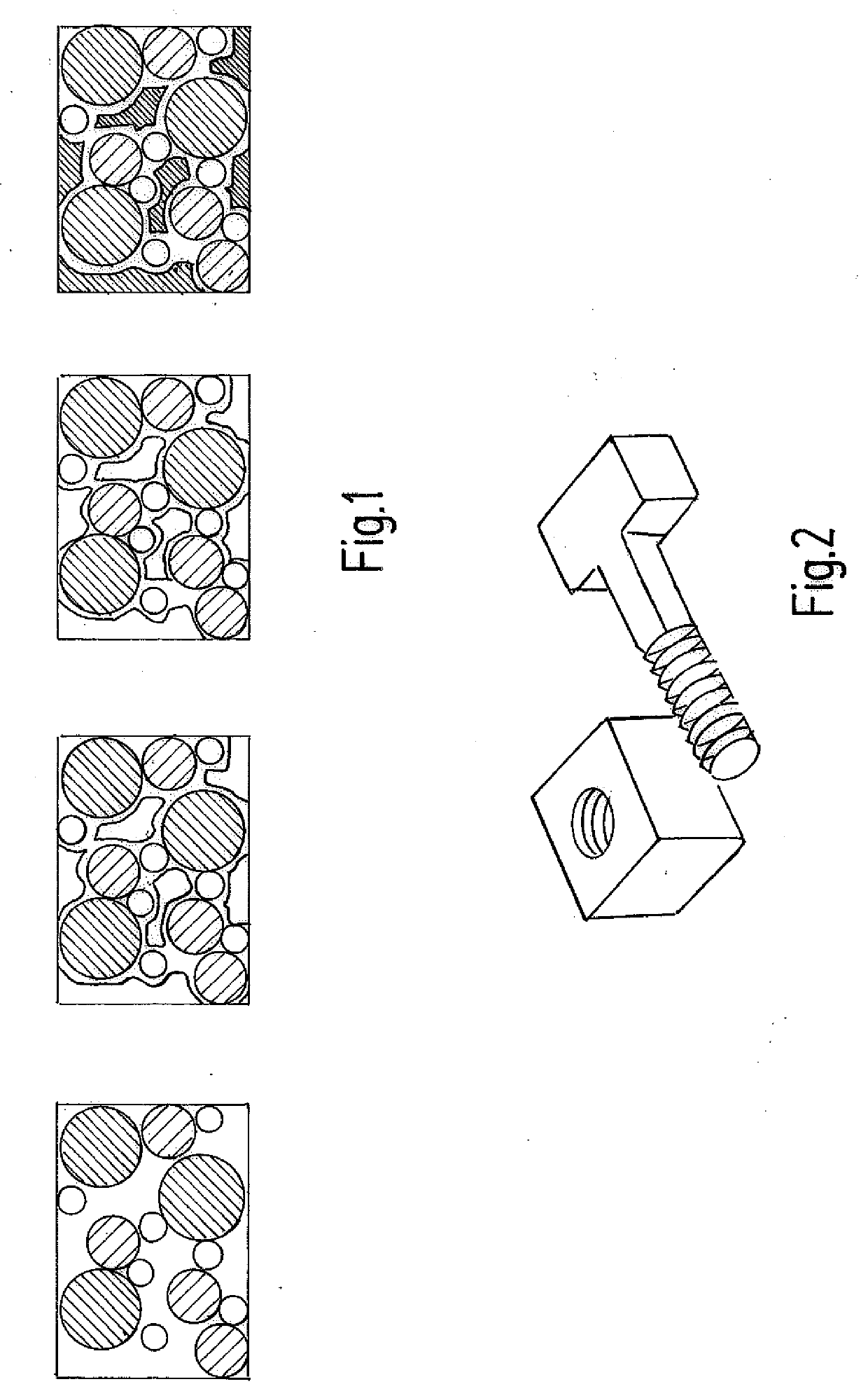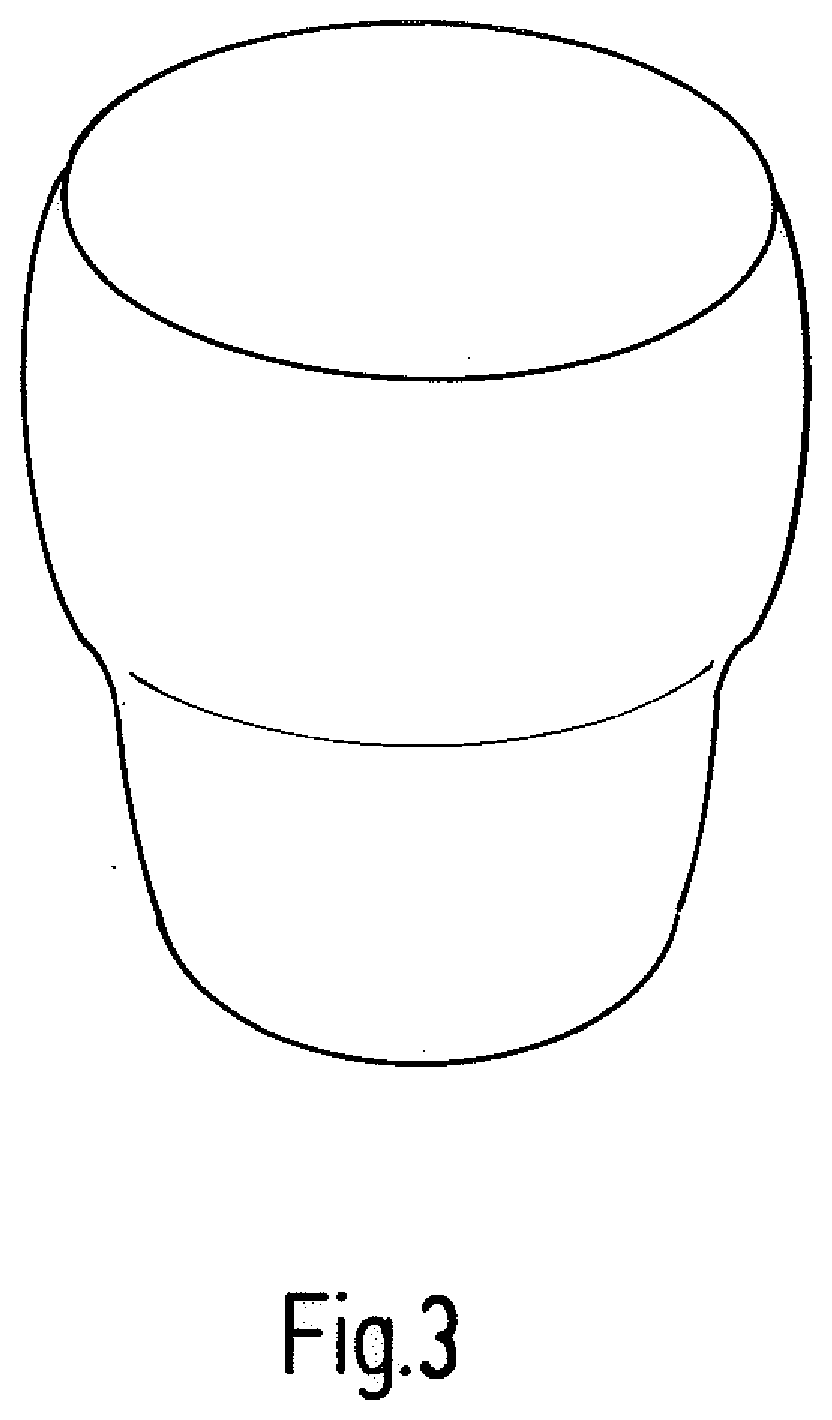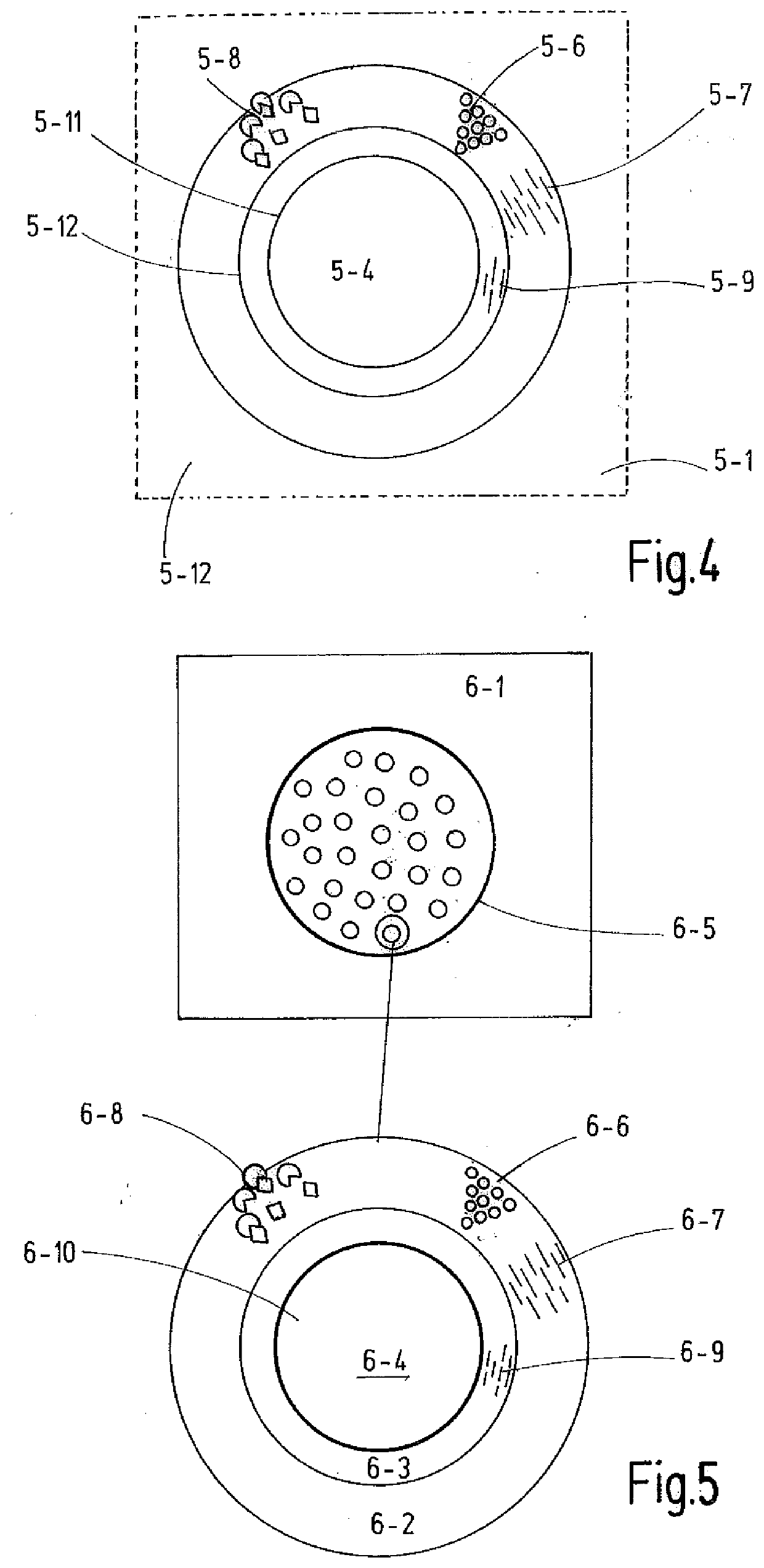Concrete Element Reinforced with Improved Oxidation Protection
a technology of oxidation protection and concrete, which is applied in the direction of cement production, etc., can solve the problems of low tensile strength of materials, use of ceramic fibers, and inability to use them for reinforcing concr
- Summary
- Abstract
- Description
- Claims
- Application Information
AI Technical Summary
Benefits of technology
Problems solved by technology
Method used
Image
Examples
Embodiment Construction
[0107]Based on the described problem and the requirements, this invention provides a three-stage solution concept:[0108]1. Protecting the composite reinforcement by a concrete cover, in particular by an especially stable concrete cover[0109]2. Using a fire-resistant, alkali-resistant, and dimensionally stable impregnation mass to maintain the inner bond in case of fire, in particular a fire-resistant and dimensionally stable impregnation resin.[0110]3. Adding sizing agents and / or impregnation masses and / or coatings to create a barrier effect against oxygen transport, in particular arranging barrier functions provided by additives either directly on the fiber level, in the impregnation resin, or on the impregnation resin.
[0111]In contrast to the comparable problems in conventional fiber-reinforced plastics in automobile construction or aerospace, achieving the fire protection requirements in the construction industry requires protection of the carbon fibers for only a limited time an...
PUM
| Property | Measurement | Unit |
|---|---|---|
| Length | aaaaa | aaaaa |
| Fraction | aaaaa | aaaaa |
| Percent by mass | aaaaa | aaaaa |
Abstract
Description
Claims
Application Information
 Login to View More
Login to View More - R&D
- Intellectual Property
- Life Sciences
- Materials
- Tech Scout
- Unparalleled Data Quality
- Higher Quality Content
- 60% Fewer Hallucinations
Browse by: Latest US Patents, China's latest patents, Technical Efficacy Thesaurus, Application Domain, Technology Topic, Popular Technical Reports.
© 2025 PatSnap. All rights reserved.Legal|Privacy policy|Modern Slavery Act Transparency Statement|Sitemap|About US| Contact US: help@patsnap.com



